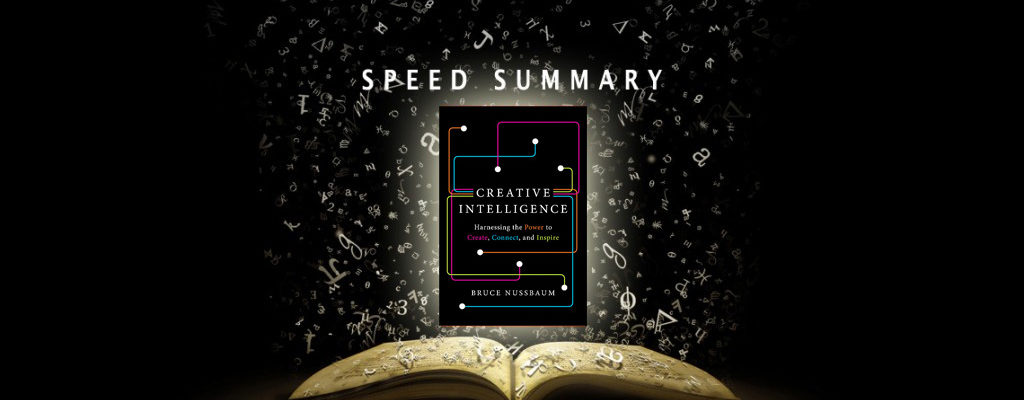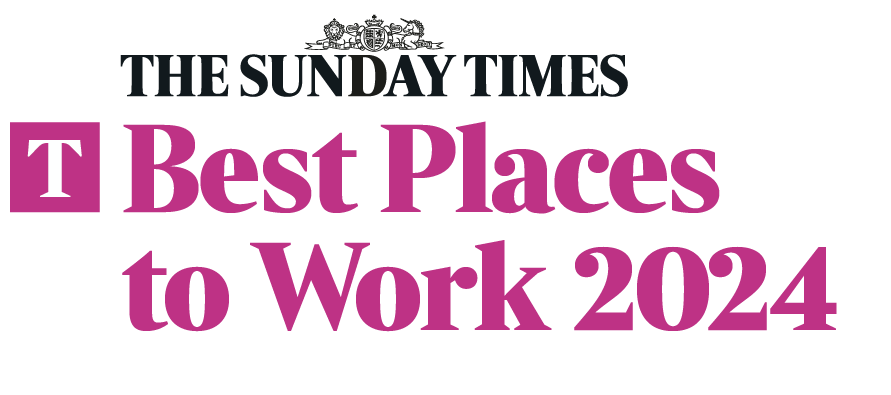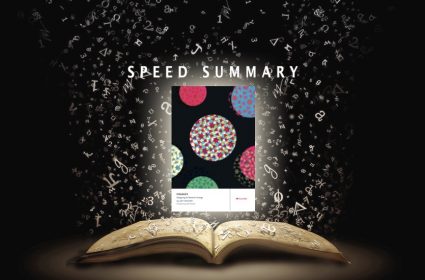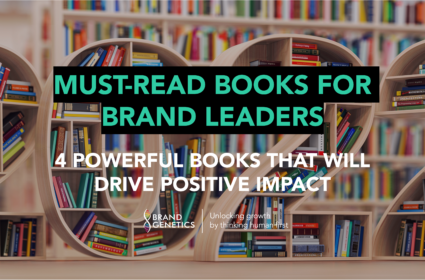Creative Intelligence: Harnessing the Power to Create, Connect, and Inspire [Speed Summary]

- Creative Intelligence: Harnessing the Power to Create, Connect, and Inspire
- Author: Bruce Nussbaum
- Publisher: HarperBusiness
- Publication: 2013
“Decoding creativity is the biggest business challenge of our era”.
And decoding creativity – the ability to produce something new and useful – is what Bruce Nussbaum, award-winning writer and professor of innovation and design at Parsons School of Design, seeks to do in Creative Intelligence: Harnessing the Power to Create, Connect, and Inspire.
The Economics of Creativity
For Nussbaum, creativity is your primary source of economic value whether you are an individual, brand or business. In a world of commoditised production, low cost operators and offshoring, our very economic viability lies in our creative ability to take zeros to ones and transform things money can’t buy into things money can buy.
Take Method cleaning products; money couldn’t buy sustainability with good design before a disillusioned ad planner and an academic poured $90,000 of personal savings into creating the hit brand.
Likewise, money couldn’t buy quality headphones with real street credibility until Andre Romelle Young – AKA Dr. Dre – created the Beats brand.
Transforming stuff money can’t buy into stuff money can buy is what creative intelligence is all about. And you need it.
Cracking the Code of Creativity
Fortunately, according to Nussbaum, creative intelligence is not something we’re born with, it’s something we acquire. Creativity is a tool, not a trait; whilst we all know stories of rare creative genius and transformational aha moments, real-world business creativity is about mastering core creative competences in a creative environment.
So how do you boost your creative intelligence, or that of your brand or business? Nussbaum outlines a five-point plan:
- Knowledge Mining: To boost your creative intelligence, focus your creative efforts on those areas where you have the deepest knowledge, experience and expertise, or immerse yourself completely in a new area of choice. Learn and borrow shamelessly from others. The deeper and richer your knowledge, the more likely it is that you’ll create new creative connections
- Framing: Question current perspectives, the way it is, and train yourself to look at the familiar with fresh eyes, and you’ll see other ways it could be. We are prisoners of our existing worldview, our frame of reference, and that hinders our creativity. Why, for example, see the way that the music industry funds new artists as inevitable? Create a new crowdfunding marketplace and call it Kickstarter and you’ll change the frame, and the game
- Playing: He who dies with the most toys, wins. Life is a game, and we live it out through play, the most creative of human activities. Use gamification and play to explore new possibilities whilst temporarily suspending judgement and consequence. Think Idol franchise, Master Chef and their ilk, or how Tetra Pak and Continuum used gamification to dream up and develop the new DreamCap, a next generation on-the-go carton top
- Making: Don’t think stuff, make stuff – we are tactile creatures and we’re creative with our hands not only our heads. Explore how you could harness new cost-effective hands-on creative technology, from the Etsy online marketplace to Instagram to 3D printers. Look for inspiration in the new tech-charged “maker-culture” of “indie capitalism”
- Pivoting: Look up. See the big picture, and smile. Pivot your focus away from the minutiae of problems and needs, and look up to big dreams, hopes and desires. Pivoting means creativity at scale, harnessing what inspires and motivates. Why create a product when you can create a business? Why change a category when you can change the world? Creative intelligence is about pivoting to things that matter, things that scale. Pivot from playing the game, to becoming the game changer
The BG Take
So does Nussbaum crack the code of business creativity in Creative Intelligence? Only time will tell, but his five creative competencies are certainly useful tools for helping brands and their agencies unlock creative potential. They take us beyond the depressing conclusion that business creativity requires hiring creative genius; with the right tools we can all unleash our inner creative. And the psychologist among us loves the (justified) trash talking about old right brain creativity myths.
The book also provides super inspiration through a new set of creative success stories – KickStarter, Method, Etsy, Beats etc – whilst tipping its hat to the perennial master of creative intelligence, Apple. If there’s a niggle, it’s that the book is light on both the practical “how-to” tools of creative intelligence, and the scientific underpinnings of the five competencies. We’d have liked to have seen more practical techniques and processes that weave the five competencies together into a creative whole.
Given Nussbaum’s pedigree, Creative Intelligence is set become a must-read for all in business innovation. And it might just change the current design-driven trajectory of our industry towards innovation driven by creativity; transforming stuff money can’t buy into stuff money can buy. Cool.




